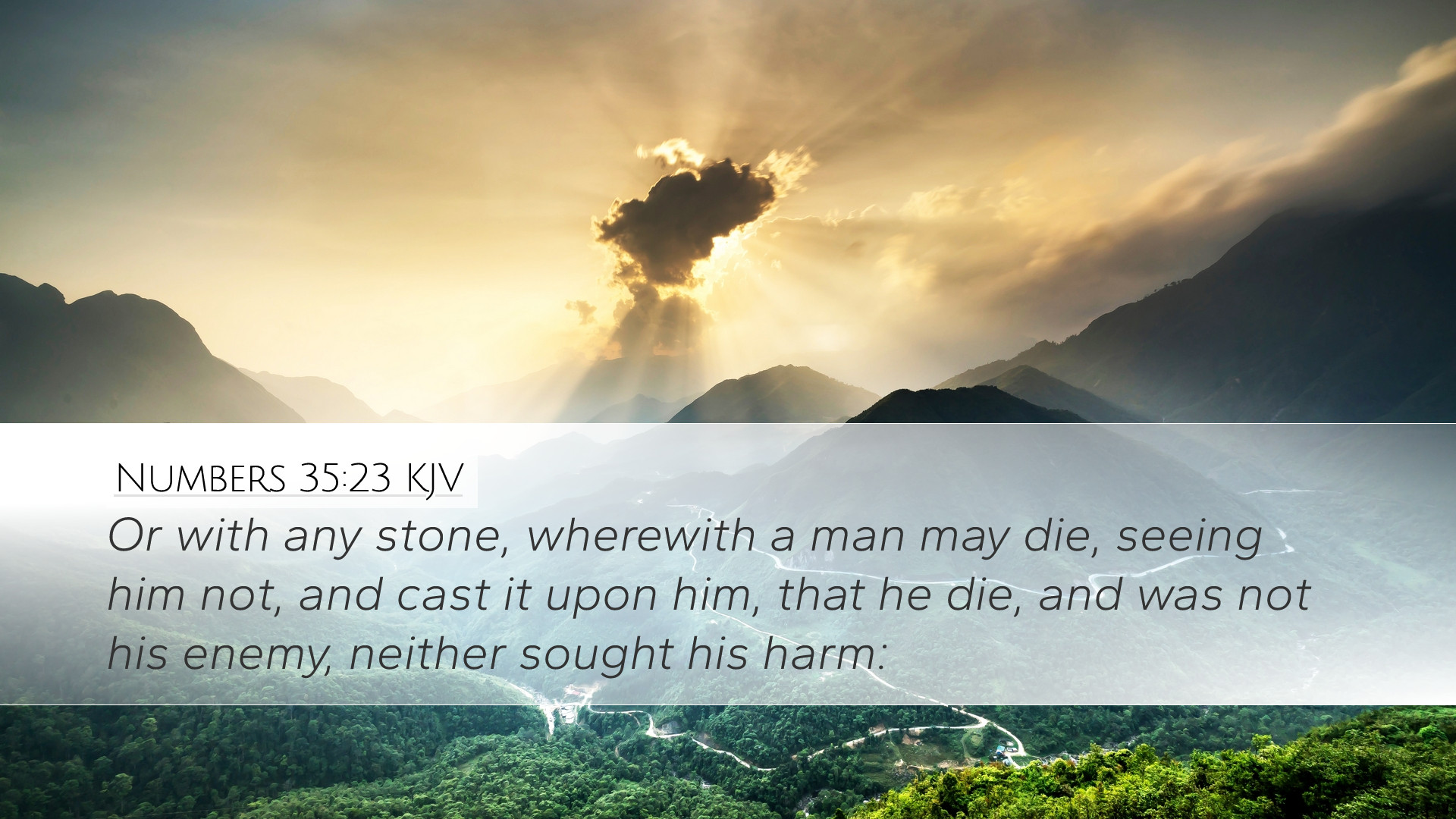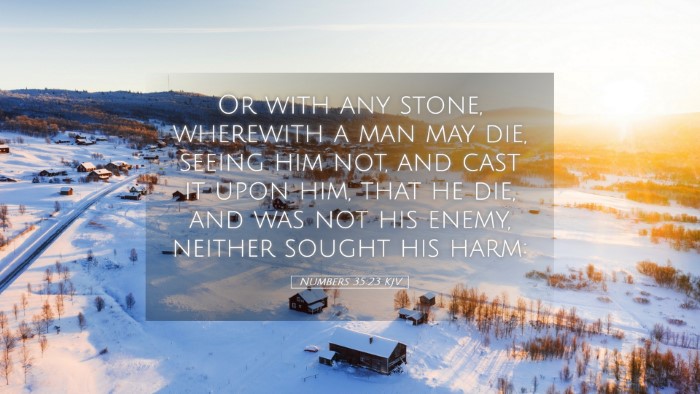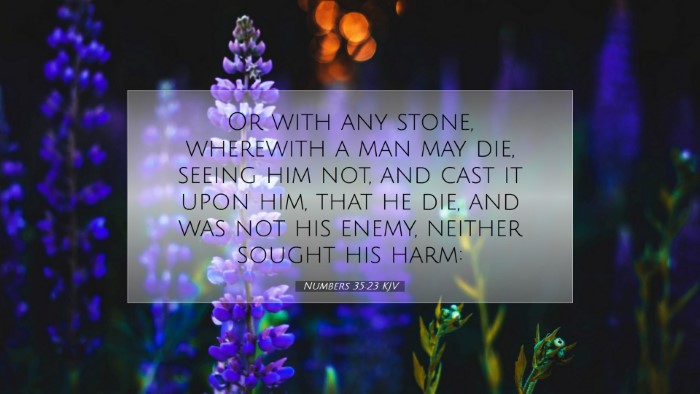Commentary on Numbers 35:23
Numbers 35:23 states, "Or if he struck him with a weapon of wood, and he died, he is a murderer; the murderer shall surely be put to death." This verse addresses the gravity of homicide and establishes legal parameters on unintentional versus intentional killing. Drawing insights from public domain commentaries, we can uncover deeper theological and practical implications relevant to pastoral care, theological education, and everyday living.
Contextual Analysis
The broader context of this verse is within the cities of refuge that were designated for individuals who accidentally caused death. Understanding this enhances the gravity of this verse. The significance of the tools mentioned—"weapon of wood"—suggests a deliberate act, contrasting with a potential accident, highlighting the principle of justice in ancient Israel.
Understanding Intent
Matthew Henry emphasizes the importance of intention in acts of violence. He notes that while the tools employed might inform us about the nature of the act, it is the heart's intention that truly determines the moral weight of the actions. The absence of malice versus the presence of malice is a key theme throughout the Pentateuch, signifying how sin is often rooted in intention.
Murder vs. Manslaughter
Albert Barnes further expounds on the distinction between murder and manslaughter within these verses. Barnes indicates that this section reflects an early legal framework that acknowledges both the unintentional and the intentional. The person who unthinkingly causes harm must find sanctuary, whereas those acting out of malice face severe consequences. This hierarchical structure in justice is essential for maintaining societal order and preserving life.
Application for Modern Believers
This legal framework raises questions about how we apply justice today. Adam Clarke warns against the simplifications of implementing modern legal judgments strictly through this ancient context. He invites reflection on the motivations behind actions—inviting believers to consider the weight of intention in their interactions and conflicts. The focus on intention not only calls for personal introspection but also emphasizes the role of grace and mercy in post-New Covenant theology.
Theological Implications
The notion of innocent and guilty within this text serves as a precursor to New Testament teachings on guilt and redemption. Expounding on these themes, both Henry and Barnes draw parallels to Christ as the ultimate judge, who understands the depths of human intentions and malice. The fact that he extends grace becomes a crucial element of understanding mercy in light of guilt.
Justice, Mercy, and Community
The provision of cities of refuge reflects God’s desire for a balanced community protected by law and mercy, establishing that community is integral to understanding God’s will. Henry articulates how these cities represented God's provision and sanctuary, not only for the perpetrator but for the victim's family and society at large. This opens a conversation for modern readers on the interplay between justice and grace in their communities.
Practical Considerations
For pastors, the application of this verse can resonate deeply within counseling and conflict resolution contexts. How do we navigate situations where intentions might lead to misunderstanding or harm? The insights from Clarke suggest that church leaders are equipped to foster environments of forgiveness while still condemning acts of malice. Engaging congregations in restorative processes strengthens the biblical model of justice and grace.
Educational Approaches for Theologians
The scholarship surrounding this verse invites theological discourse on ethics, justice, and divine mercy. Students of the Scripture can explore how ancient laws influence contemporary discussions on moral responsibility. The emphasis placed on community principles encourages further study into biblical social justice and the implications for modern society.
Conclusion
The examination of Numbers 35:23 through commentaries from Henry, Barnes, and Clarke reveals profound insights into divine justice, human intention, and communal relationships. This understanding can help shape teachings, pastoral approaches, and theological studies in ways that honor both the letter and spirit of the law. In a world fraught with misunderstanding and quickly drawn conclusions, the careful discernment urged by these commentaries remains timeless.


